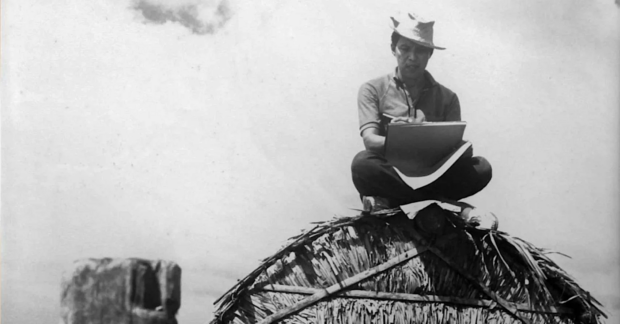It was 2008. I was due to give birth, as I was already in my 40th week. I walked, or rather waddled, into my OB’s office, curious to find out if my daughter had any plans of moving out of my uterus.
“Nope, she’s still too high. Maybe next week.”
Another week of pregnancy? Actually, I didn’t really know what I wanted. On one hand, I could not wait to meet my first born, not to mention get over the summer pregnancy. But on the other hand I was happy to have a little extension because like any first-time mom, I was nervous about labor and how to take care of a baby!
“Wait, what’s this? Her cord is in the wrong place. Ok, you’re giving birth via Caesarean section tomorrow morning.”
A Caesarean section was the last thing I wanted. But after discussing the situation with my OB, I went home and got my bag. In my excitement, I had packed my hospital bag several weeks in advance. Miguel and I went to Mass to pray for a safe delivery, and I can still recall his worried face when he asked me why I was so pale. I had never had any surgery in my entire life, and I was terrified of going through the CS the next day.
He tried to make light of the situation and teased me about asking the doctor to make a “Zorro”-like “Z-cut” on my stomach as we laughed at the idea.
The next day went by like a blur. I saw Migs in a scrub suit, and thanks to the anaesthesia, repeatedly told him he looked like “Dr. McDreamy.” But despite the haze that came with the medicines, I clearly remember hearing my daughter cry for the first time, and the joy I felt when they brought her to me.
My verdict on a CS? It was not as bad as I thought it would be. Personally, nursing in the first few weeks was more difficult and made me shed more tears than the delivery and recovery. I wanted to try for a normal delivery for my second child, but something was wrong with the cords and again, the safest option for him was a CS. I don’t know what kind of Cirque du Soleil my kids do in my stomach for them to both manage to get their cords all wrapped around them.
Caesarean sections can be very intimidating and scary, especially if you are not prepared for one. And since most of the time it is usually an emergency, it becomes even more difficult to prepare for it, emotionally and physically.
For this reason, even if you’re 100-percent sure that you are going to have a normal delivery, it is still best to read up and learn a little about Caesarean deliveries, just in case you find yourself in need of one at the last minute.
1.) A C-section is the “surgical delivery of an infant via an incision in the mother’s belly and uterus while the mother is under anaesthesia. The baby is delivered through the incision, either manually or with the help of a vacuum or forceps.” In the US, current statistics show that one out of three babies are born this way.
Fetal distress
Emergency C-sections are usually due to fetal distress (due to the ineffective labor), cord prolapse (cord is ahead of baby in the birth canal), abnormal fetal position such as breech, placenta abruption (when the placenta detaches from the uterus too early), placenta previa (when the placenta blocks the cervix) or preeclampsia.
Elective C-sections may also arise in the case of multiples, maternal medical issues or when the baby is too big, which is possible especially for mothers who have gestational diabetes.
2.) You may have trained for a Lamaze birth, but there is no way you can go without the necessary medicines for surgery such as a CS.
Try not to look at the needle, but if you must, don’t worry, they will usually numb the area on your back where they will inject you with anaesthesia prior to the actual injection. So no matter what the size of the needle may be, you won’t feel a thing, and by the time you finish counting 1-20, you won’t feel anything at all.
If you want to be conscious and see your baby immediately, ask for a regional anaesthesia. You may feel some pushing and pulling, but no pain. However, in some cases, the doctor may decide that the patient needs a general anesthetic, in which case, you’ll be knocked out from beginning to end.
3.) Most of our aunts and mothers who underwent a CS in the past have the classical incision, which is the vertical cut in the middle of the stomach, but nowadays, most doctors will use the low traverse incision which leaves nothing more than a four-inch scar just below your bikini line, so keep those bikinis because you are going to rock them again!
4.) It is a major operation. Don’t forget that. It may feel almost routine due to the number of people you may know who have had it or the priority you will put on taking care of your newborn after the operation, but that fact is, you need to recover and take care of yourself if you want to take care of your baby.
Recovery in bed will take a few days, though you will be encouraged to start walking around your room after the first 24 hours. While most woman who have normal deliveries can go home in a day or two, if you have a CS, expect to stay in the hospital for at least three days. You will also have to restrict your actions for the first few weeks. No driving, sudden movements or carrying of heavy objects or older children.
Avoid steps if possible and use stools to climb into bed. Use your arms to push yourself up gently instead of jerking yourself upward instantly.
It wasn’t painful but it wasn’t painless, either. More than anything, it was discomfort, not unlike a case of cramps from your monthly visitor.
In fact, the pain medication they gave me was the same thing I used to get from our clinic back in high school. However, despite the feeling that you are already fully recovered after a few weeks, bear in mind that it takes an average of six weeks to fully recover so don’t make any plans for the first month and a half.
Regular cleaning
Your wound will also need continuous and regular cleaning which, fortunately, is pretty easy to do on your own at home with the help of a mirror. If you do it properly, you can heal easily with no infections, but if you don’t, you might have to go back to your doctor.
You will be given a belly binder to keep everything in place. Don’t get lazy with this one. Not only will it help with your recovery and make it easier for you to walk around and do simple things like laughing and coughing, it will also help flatten your stomach!
5.) Since it is a major operation, it is not without risks and dangers, and many doctors suggest getting one only if it is medically necessary or recommended by your OB. One such risk is directed toward the placenta which, with every C-section, gets an increased chance of developing Placente acretta, which is the placenta growing into the uterine wall. However, by increased chance, I mean 0.06 percent with your second CS and 2.1 percent with your third so, don’t worry about this too much.
However, just as with giving birth naturally, there are many other unforeseeable accidents or problems that can occur, that you just have to pray you can avoid, and that your doctors can address. Other such risks involve bleeding, infection, injury to bowel or bladder and risks from the anaesthesia.
There are also some women who get emotionally affected by a CS, especially those who may have had their hearts set on delivering normally or naturally.
One of my closest friends felt very upset at herself for not having been able to deliver naturally, despite the fact that the CS was due to a medical emergency. She blamed herself for a while and took it as a sign that she was not a fit mother. Fortunately, she snapped out of it within a few weeks and has now moved on to a much happier and contented state.
6.) There are also risks for the infant, which may include breathing problems possibly connected to having been born prematurely, and sluggishness from the medication.
Bacteria is also often cited as another concern. When babies are born normally, they go through the birth canal and are exposed to the good bacteria present in it, which helps build up their immune system. Sort of like a despedida gift from mommy’s body.
7.) Almost always, a C-section will amount to extra financial costs, so save up not just for the natural birth but for an emergency CS, as well.
8.) Depending on how many children you would like to have, you may or may not be affected by the limited number of children most doctors recommend CS mommies can have together with the spacing of 12-24 months in between births. Most people say you can safely have only two to three children. However, I’ve met some women who have had four or five and in fact, I know someone who has eight (yes, eight!) healthy children, all delivered via CS.
But do consult with your own doctor first before you decide anything. It is not a game to be taken lightly, as it is not just your life you put on the line, but the life of the children who will have to grow up without a mother if something unfortunate should happen.
There are many reasons to have a Caesarean section, just as there are also many reasons not to have one. But when it comes to the safety of your unborn child, doctor knows best and there is no reason not to listen. And if all goes well, you may just be pleasantly surprised at how well it went.














































